Every culture has that one magical ingredient that transforms ordinary food into something extraordinary. These aren’t your typical ketchup and mustard combinations – we’re talking about the secret weapons that home cooks guard fiercely and chefs travel thousands of miles to source. From fiery North African pastes to umami-rich Asian ferments, these condiments tell the story of their homeland in every spoonful.
The beauty of exploring global condiments lies in discovering how different cultures solve the same problem: making food taste incredible. Here is a list of 15 must-try local condiments that will revolutionize your cooking and give you a passport to flavors you never knew existed.
Harissa

This Tunisian powerhouse packs more personality than a street market vendor on a busy afternoon. Made from roasted red peppers, hot peppers, spices, oil, and other flavor ingredients, harissa is Tunisia’s de facto national condiment. The bright red paste delivers heat that builds slowly, allowing the complex blend of cumin, coriander, and caraway to dance on your palate. Think of it as the Mediterranean’s answer to Sriracha, but with centuries more experience and a whole lot more attitude.
Gochujang

Korea’s gift to spice lovers everywhere, gochujang is what happens when fermentation meets perfection. This savory, sweet, and spicy fermented condiment is made from gochugaru (red chili powder), glutinous rice, meju (fermented soybean) powder, yeotgireum (barley malt powder), and salt. The result tastes like a warm hug with a spicy kick – umami-rich, slightly sweet, and complex enough to make your taste buds do a happy dance. It’s the secret behind Korea’s most beloved dishes and increasingly popular in fusion cooking worldwide.
Yuzu kosho
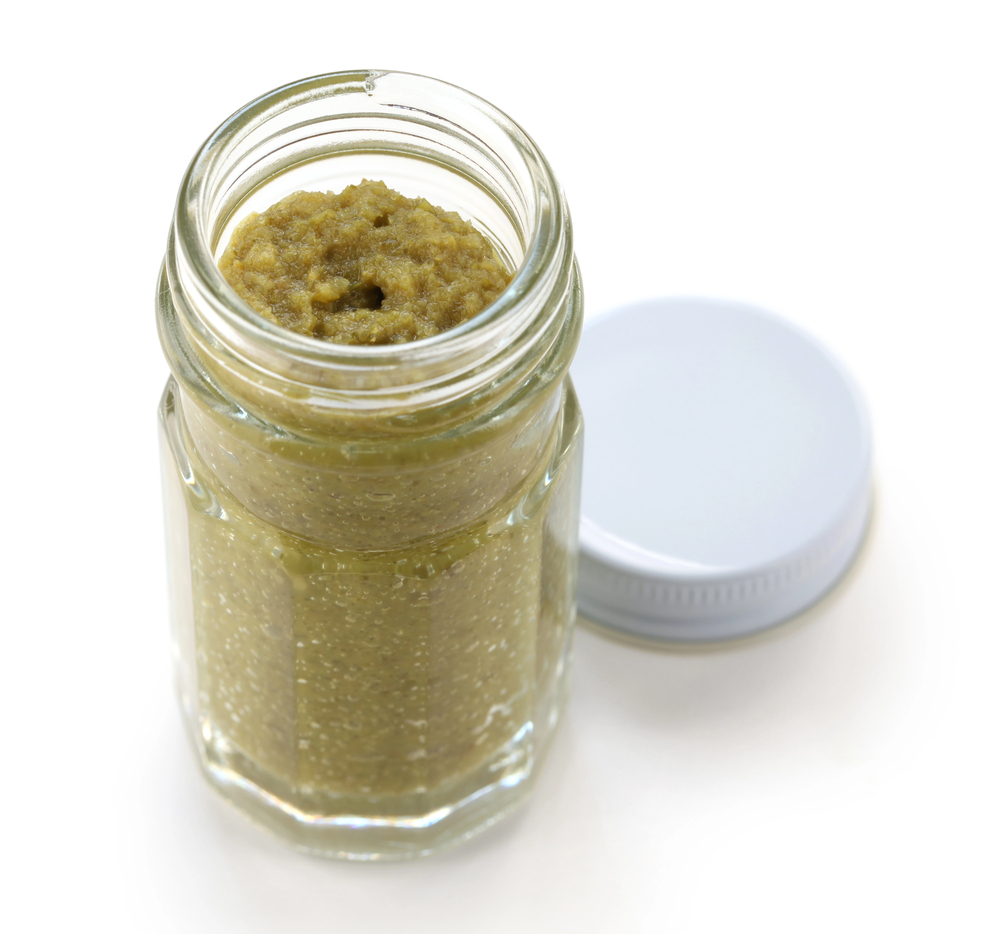
Japan’s citrus-chili paste proves that good things come in small jars. Made by roughly chopping chili peppers, grinding them with yuzu zest and salt, and then letting them mature, yuzu kosho is mostly used in the Kyushu region. This emerald-green condiment delivers a one-two punch of heat and brightness that cuts through rich foods like a samurai sword through silk. A tiny dab transforms everything from grilled fish to noodle soups into something transcendent.
Aji amarillo paste
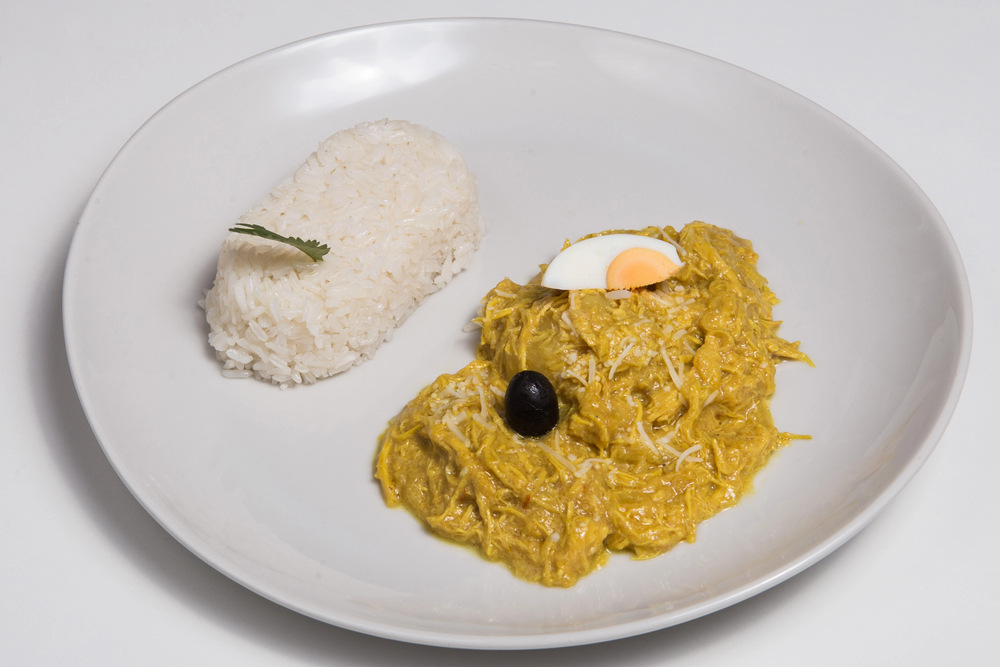
Peru’s sunshine in a jar captures the essence of South American cooking in one vibrant condiment. This creamy, spicy sauce is made from amarillo peppers and fresh jalapeños, as well as cilantro, mustard, peanuts, oregano, cumin, and oil. The golden-yellow paste brings medium heat with a fruity sweetness that’s impossible to replicate with other peppers. It’s the backbone of countless Peruvian dishes and turns simple roasted chicken into something worthy of a celebration.
Zhug
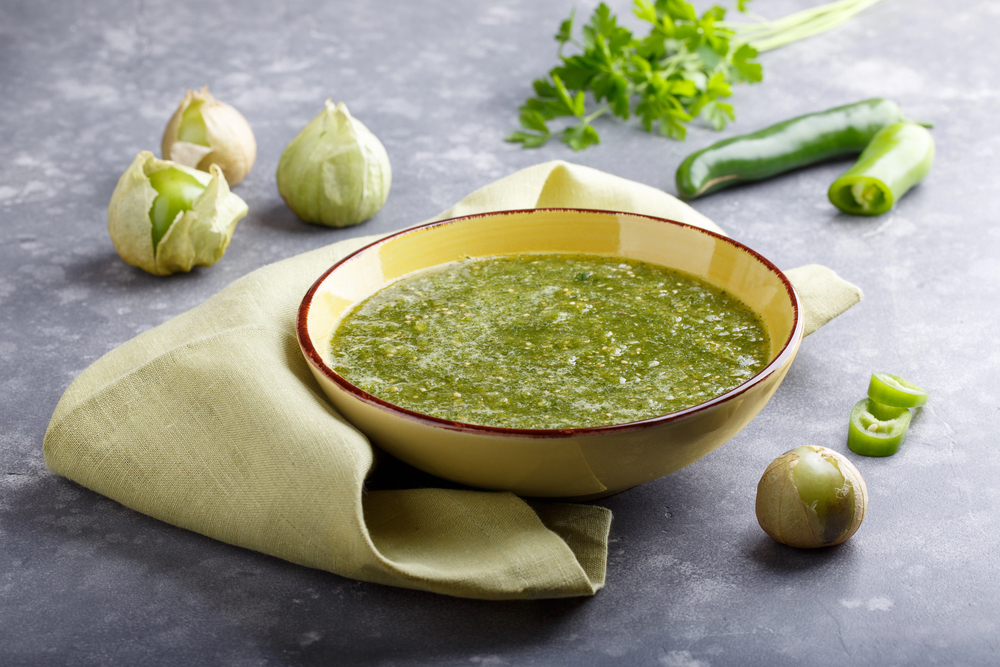
Yemen’s herbal hot sauce is like pesto’s wild, spicy cousin who spent too much time in the desert sun. Made with red or green chili peppers, coriander, parsley, various other spices, and olive oil, zhug is like a spicy pesto hot sauce that originated in Yemen. This chunky green sauce brings serious heat, balanced by fresh herbs that make your mouth water before the fire hits. It’s become the darling of Middle Eastern restaurants and home cooks who want to add instant complexity to their dishes.
Sambal oelek
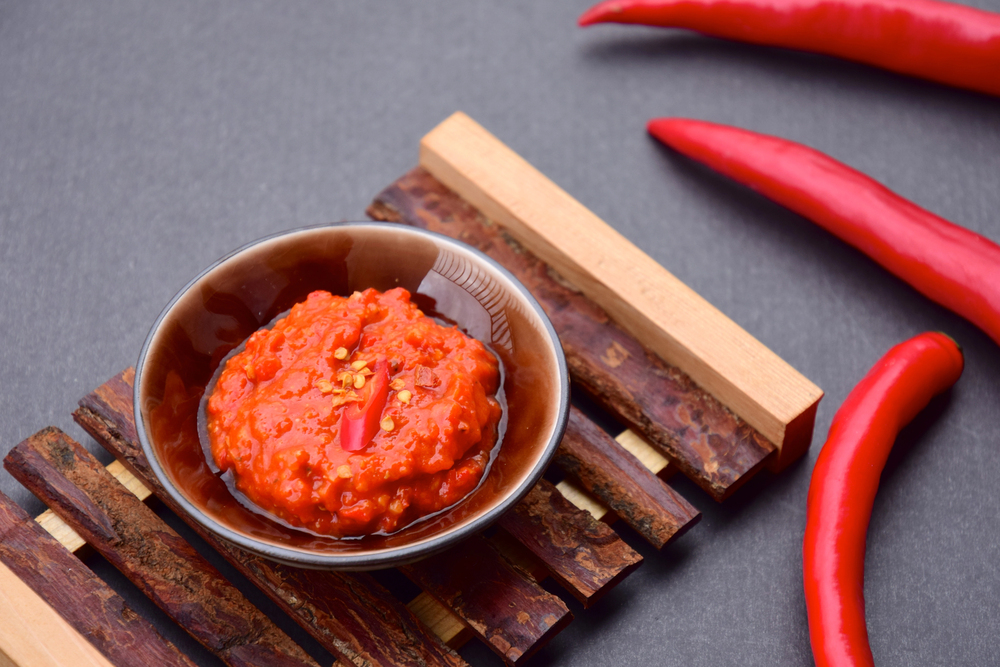
Indonesia’s straightforward approach to chili paste proves that sometimes simplicity wins. Made by crushing a variety of fresh hot chilis, salt, and vinegar together into a paste, it’s less salty and tangy than Sriracha and is chunkier, as the sauce is traditionally made with a mortar and pestle. This bright red condiment lets the pure chili flavor shine through without any fancy additions. It’s the honest workingman of the chili paste world – reliable, versatile, and always ready to bring the heat.
Chimichurri

Argentina’s green gold turns any barbecue into a gaucho gathering. This vibrant green sauce is typically made from finely chopped parsley, minced garlic, olive oil, oregano, and vinegar. Fresh and herbaceous with a sharp acidic bite, chimichurri cuts through rich grilled meats like a knife through butter. It’s proof that sometimes the best sauces are the simplest ones – just don’t tell an Argentine cook you made it with dried herbs.
Aioli
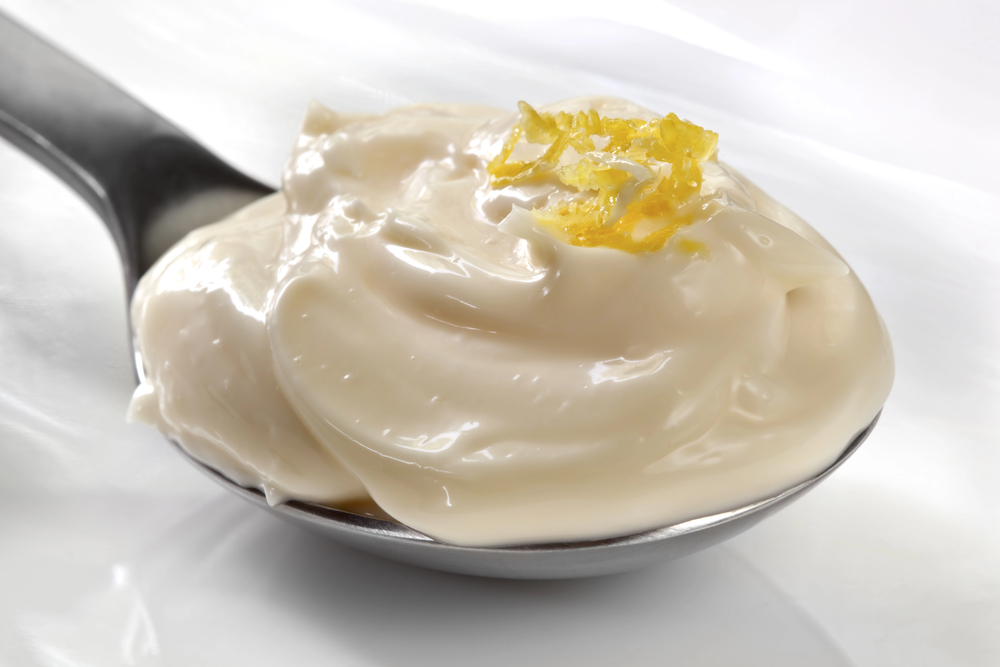
The Mediterranean’s creamy masterpiece makes regular mayonnaise look like amateur hour. A close, but infinitely more cosmopolitan cousin of mayonnaise, aioli begins with a ground garlic paste before whipping in egg yolk, olive oil and mustard. This luxurious emulsion brings rich garlic flavor with a silky texture that coats everything perfectly. It transforms simple vegetables into gourmet appetizers and makes you understand why the French take their sauces so seriously.
Miso
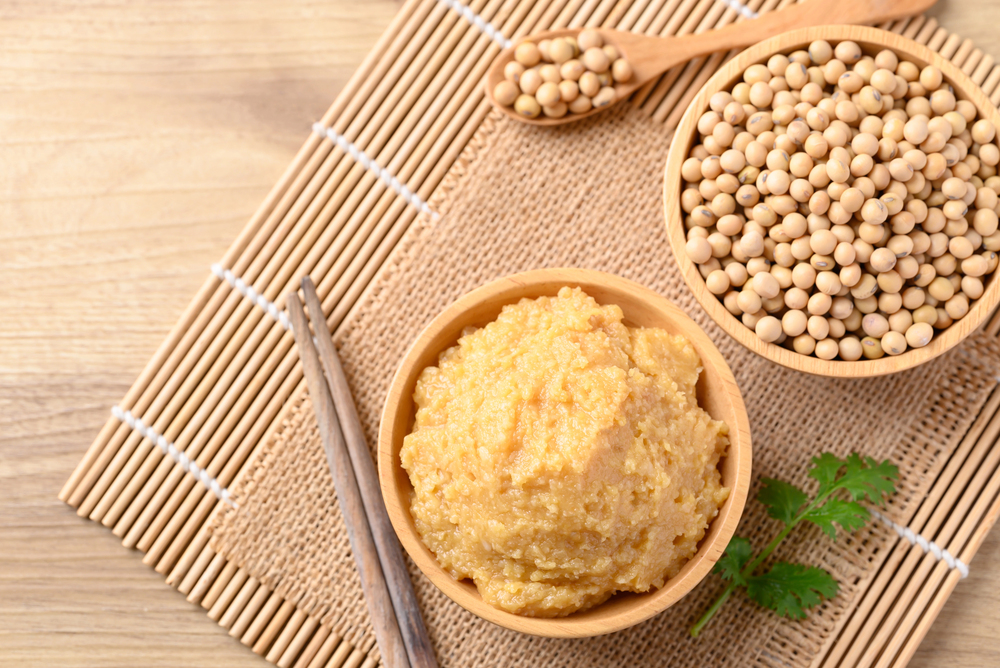
Japan’s umami bomb has been quietly revolutionizing non-Japanese kitchens for decades. Produced through a fermentation process similar to soy sauce, miso is one of the most important condiments in a Japanese kitchen and can be served directly as a topping on rice. This fermented soybean paste brings deep, savory complexity that makes everything taste more like itself. It’s like having a secret flavor enhancer that works in everything from soup to salad dressing to marinades.
Sriracha
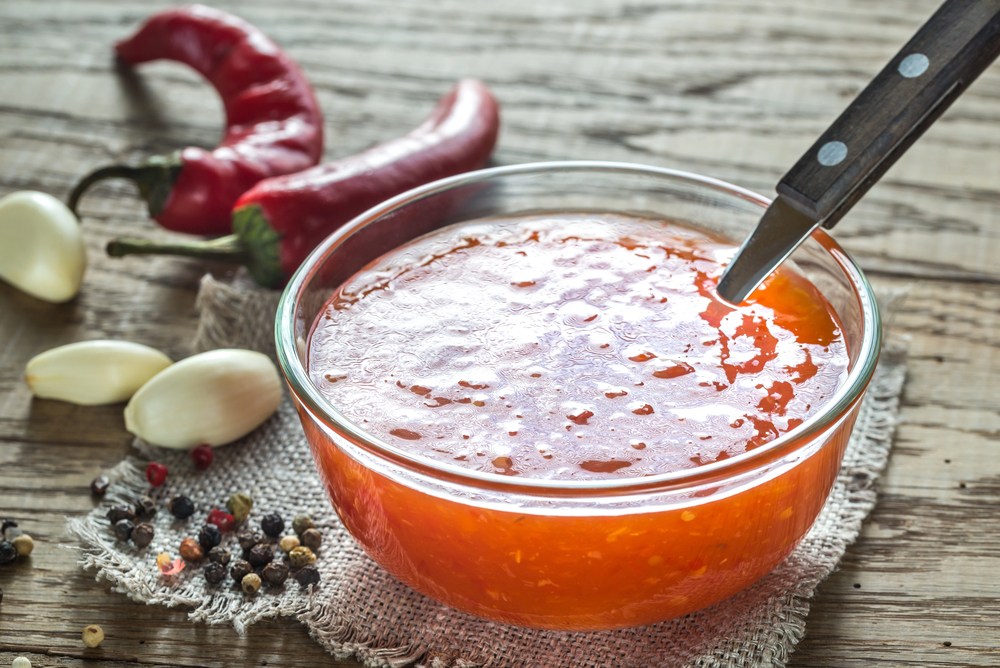
Thailand’s sweet heat has conquered the world one squeeze bottle at a time. Originally created in Si Racha, an eastern coastal town in Thailand, it’s more sweet than spicy and has a garlicky taste. This orange-red sauce brings moderate heat with a hint of sweetness and enough garlic to keep vampires at bay. It’s become the gateway drug for spice lovers and proves that sometimes the best exports are the ones that make everyone happy.
Hoisin sauce

China’s ‘Peking sauce’ brings sweet and savory complexity that makes duck sing opera. This Cantonese sauce is loaded with salty and umami flavors and is commonly used alongside Peking duck, giving it its alternative name, ‘Peking sauce’. Thick, dark, and intensely flavorful, hoisin balances sweet, salty, and savory notes like a culinary tightrope walker. It’s the sauce that makes you understand why Chinese cuisine has captivated the world for centuries.
Piri piri sauce
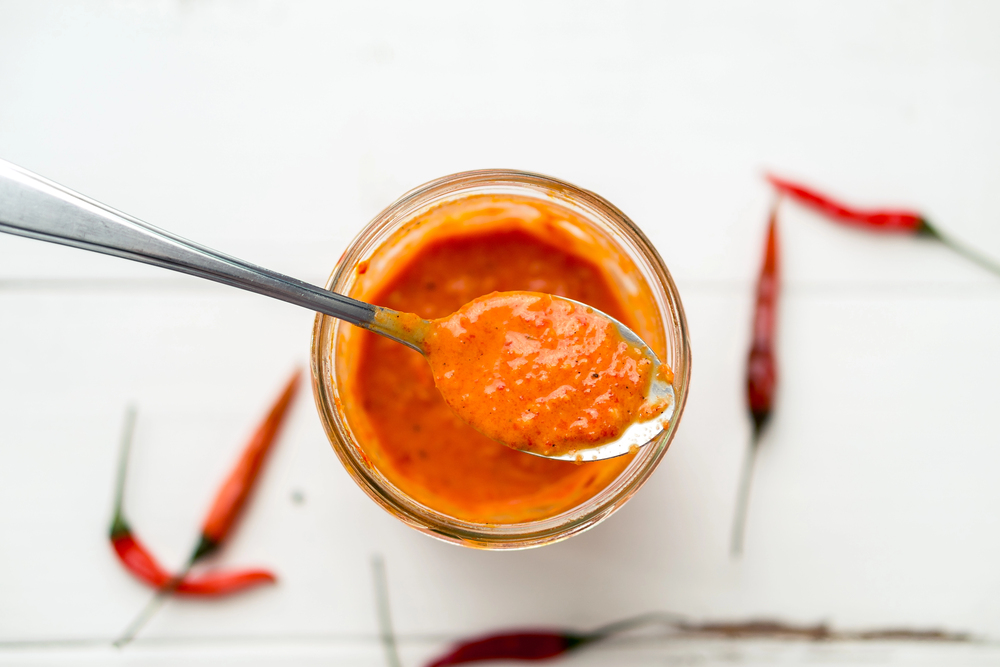
Portugal’s African-inspired condiment proves that colonialism’s only good legacy might be this incredible sauce. Made with the fiery peri peri peppers, vinegar, lemon, garlic, onion, herbs, and oil to give it a smooth texture, piri piri sauce is used as a marinade for meats and poultry. This Portuguese creation brings serious heat tempered by citrus brightness and herbal complexity. It’s the soul of Portuguese grilled chicken and the reason why simple grilled foods can taste absolutely spectacular.
XO sauce

Hong Kong’s luxurious seafood sauce is what happens when Cantonese chefs decide to create liquid gold. XO sauce is a spicy seafood sauce that originated from Hong Kong. This premium condiment combines dried scallops, shrimp, and chili oil into something that tastes like the ocean concentrated into pure umami bliss. It’s expensive, indulgent, and worth every penny – think of it as the caviar of the condiment world.
Dukkah

Egypt’s crunchy spice blend proves that not all condiments need to be wet to be wonderful. This ancient mixture combines toasted nuts, seeds, and spices into a textural powerhouse that adds crunch and flavor to everything it touches. Traditionally made with hazelnuts, sesame seeds, coriander, and cumin, dukkah transforms simple bread and olive oil into a feast fit for pharaohs. It’s the condiment that makes you realize texture is just as important as flavor.
Ajvar

The Balkans’ ‘vegetable caviar’ turns humble peppers into liquid sunshine. Made primarily with red peppers and oil, though an extremely popular variation includes eggplant, you’ll find it common in the cuisine of the Balkans. This roasted red pepper spread brings smoky sweetness with enough depth to make you forget about regular condiments. It’s comfort food in a jar and proof that sometimes the best flavors come from the simplest ingredients treated with respect and patience.
From ancient traditions to modern tables

These condiments represent thousands of years of culinary evolution, each one a perfect solution to local ingredients, climate, and taste preferences. What started as preservation methods in ancient kitchens have become the flavor foundations that define entire cuisines today. In our increasingly connected world, these once-local secrets are now available globally, allowing home cooks everywhere to add authentic international flavors to their everyday meals. The next time you’re looking to transform a simple dish into something extraordinary, remember that somewhere in the world, there’s a condiment that was created specifically to solve that exact problem.
More from Travel Pug

- 20 Best Beach Towns in the Carolinas
- 13 Destinations Where Tourists Regularly Regret Their Trip
- 20 Things You Actually Get in First Class
- 20 Small Airports With Aviation Museums
- 20 Places in the U.S. That Are Perfect for a Reset Trip
Like Travel Pug’s content? Follow us on MSN.
